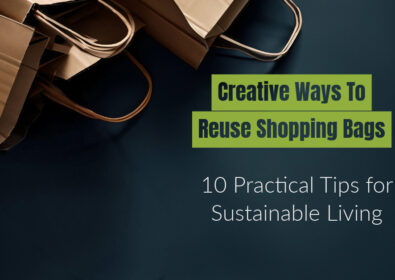By Splash Packaging TeamSustainability in the Packaging Industry
Your Packaging Needs to Be More Sustainable. Thankfully, It’s Not Hard to Do
Here’s a sobering piece of data: in 2018, containers and packaging contributed 30% of community solid waste in the US. That’s 82.2 million tons of packaging that’s not getting repurposed or recycled, and that’s a problem.
As e-commerce continues to explode year after year, the amount of packaging that we inevitably toss in the trash will only grow. But here’s some good news: reducing packaging waste isn’t only possible, it’s pretty simple to do.
Whether you work for a large company or own your own business, chances are you care about the pollution (and shipping costs) generated by your products and services. Let’s talk about some action items you can use to immediately and permanently reduce the impact of your business on the environment.
What’s the Lifecycle of Your Packaging?
It’s actually pretty easy to purchase bulk packaging online without understanding where it comes from or how it’s made. Knowing how that packaging is created and the environmental impact of its transport from its shipping origin to you is key in understanding how to make more sustainable choices.
Material Origins: Do Your Research
Product packaging is made from materials that are virgin (never used before), partially recycled, or completely recycled.
Virgin materials are the largest problem in this category, because they’re introducing new substrates rather than repurposing materials that have already been used. Sometimes, though, the packaging you need may only be available using virgin materials. In that case, make sure that they’re coming from manufacturers using sustainable environmental and forestry practices.
Partially and fully recycled materials are generally widely available, unless you need a very niche product. These are in general the most sustainable choices, since they keep materials that have already been used in use for longer. Our own EcoPlus paper shopping bags, for example, are a sturdy bag made from 100% recycled post-consumer and post-industrial paper.
You’ll sometimes see packaging products that are made from alternative, plant-based sources, like bagasse, bamboo, pineapple, and more. Be careful when selecting these products: while some are excellent eco-friendly choices, others require the clearing of forests to produce, and others that claim to be biodegradable or recyclable are not in regular landfill settings.
Material Destinations
What happens when your customers unpackage your products? Where does all that material go? Unfortunately, according to that same 2018 study, only 34% of consumers recycle packaging waste, and that number looks a little more bleak when you consider how much packaging can’t safely be recycled.
Look for materials that can be easily recycled, recomposted, or repurposed by your customers. Great examples of these materials include recycled paper and paperboard.
One of our favorite examples of that is Lush, the ever-eco-friendly beauty brand. They feature in-store products that:
- Are mostly packaging-free (65%!)
- Use 100% post-consumer plastic when plastic is needed
- Feature an in-house recycling incentive
- Use plant-based, biodegradable packing peanuts
- Use 100% recycled paper
On top of that, when Lush ships out from their online store, they do so using biodegradable cellophane, which looks and acts like plastic but readily breaks down in both consumer and industrial settings.
If a piece of packaging can’t easily be recycled or composted at home, and instead require industrial-grade recycling or composting, many customers opt to throw it away. This takes usable material out of the system, contributing significantly to waste.
Keep in mind that even if a base material is recyclable, certain treatments (like coatings, which are often plastic, and some printing methods) may render it single-use.
Storage and Transport Costs
In a measurable way, how your packaging is stored, packed, and transported before it gets to you is another carbon emission to be concerned about. The bigger your packaging order is, the more space it takes up in a warehouse or a truck – meaning that fewer things fit in either, causing a need for more trips and more storage, which in turn causes more carbon emissions. The more things you can safely fit inside a singular package, the better.
Thankfully, packing materials have seen some upgrades since the ubiquitous (and eco-unfriendly) packing peanut. Products like SpiroPack, FlexiHex, and newsprint are more efficient and just as protective as the plucky peanut, but they’re also curbside recyclable and take up way less space.
Product Samples (and Measuring Your Products) Can Save Time and Waste
Ever order a shirt online, only to realize that it doesn’t fit? Even more so than clothing, packaging requires precise measurements – order a package that’s too large and you’re taking up more space than needed in storage and shipping, adding extra cost to your business. Order a package that’s too small, and your products won’t fit and the packaging you’ve purchased is unusable.
Avoid this operations headache by ordering samples. While it can take a little longer to do, it’ll save you time, energy, and money in the long run.
Regardless of the size of your order, most packaging companies will send you samples of your product if requested.
Consider Excluding the Extras
When’s the last time you saved a receipt and actually used it? Packing slips, order summaries, informational inserts, and plastic wrap all contribute to packaging waste, and don’t actually add that much to your product.
Some things to consider removing or modifying in your packaging:
- Switch from physical to digital receipts and order summaries
- Consider printing or stamping on the inside of your box instead of using separate materials to include information
- Choose more recycled materials
- Use paper product protection instead of packing peanuts
- Stop using plastic wrap on your products
Make It Obvious What to Do With Your Packaging When It’s Done Its Job
If your customers don’t know whether your packaging is recyclable, chances are good that they won’t recycle it. Make sure that your customers know how, when, and where to recycle or compost your packaging. A bonus: customers care about sustainability – so you can use this as part of your marketing tactic and get a more direct ROI from using eco-friendly materials.
Custom packaging? More eco-friendly?
Products that fit snugly in their boxes reduce packaging materials and transportation-involved carbon footprints. The better you can fit your product into a box, the more boxes you can fit onto a truck.
Custom packaging may seem like an extra cost up front, but it’s often an expense that helps you save in transportation and shipping fees. It also gives your customers a product that looks and feels like you care about them.
While we’re exclusively a stock packaging company, and stock packaging can provide eco-friendly options for a variety of businesses, if you’re looking to package a specific product you may consider custom work. Our affiliate brand, Morgan Chaney, works with customers from every kind of industry to provide sustainable custom packaging solutions.
Make it easier on yourself: work with a packaging company that cares about sustainability
Not all packaging companies are necessarily conscious of the environmental impacts that product creation, storage, and shipping can have. Working with a company that states its commitment to eco-friendly packaging (and can back it up with product details) can make your packaging decisions way easier.
Since Splash started in 2019, we’ve been committed to bringing you eco-friendly packaging options and providing information on how those options get made — as transparently as possible — right on every product page.
Let’s make your packaging beautiful – and sustainable – together.







